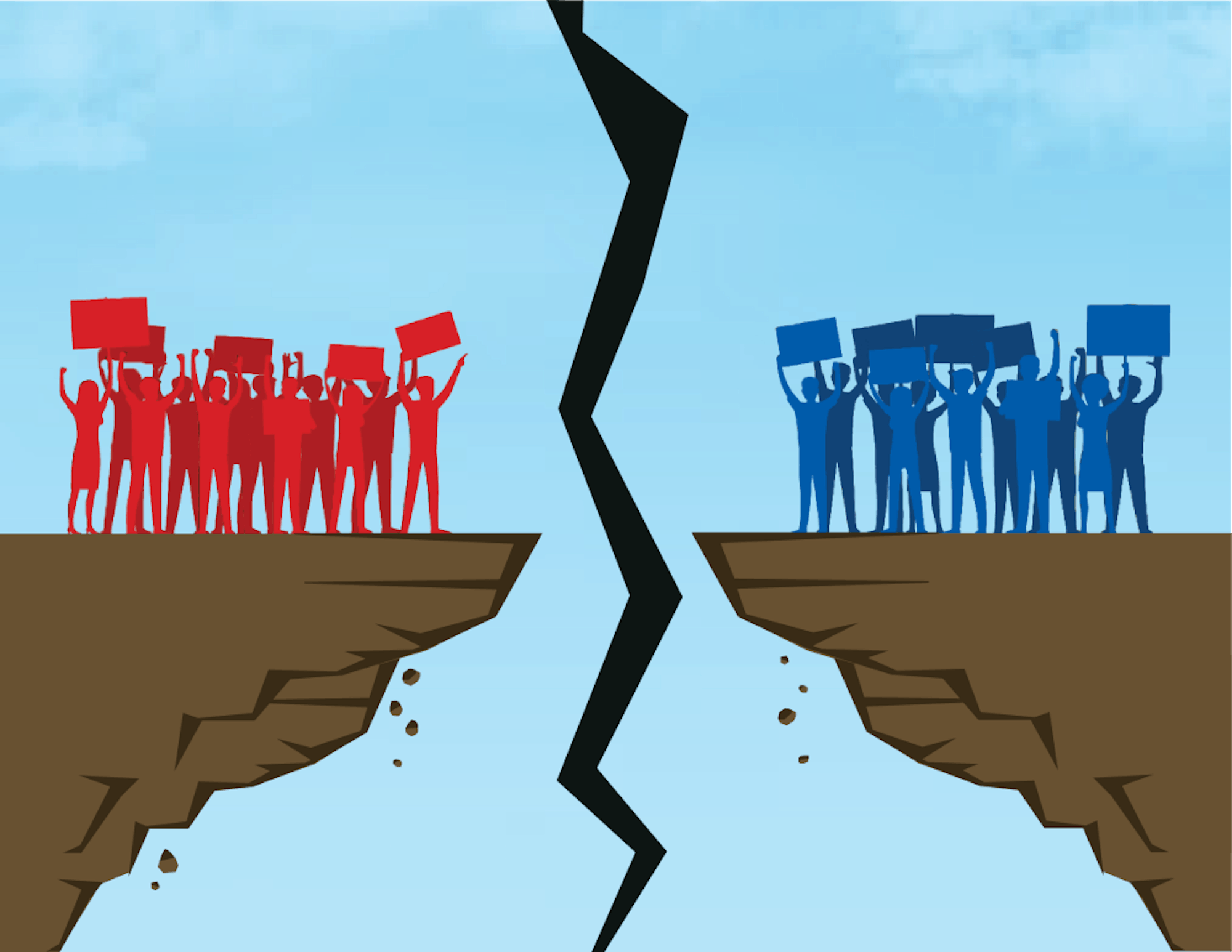As the night of the Nov. 2 election progressed and it became clear that Republican candidate and businessman Glenn Youngkin would defeat former Democratic Governor Terry McAuliffe in the race for governor of Virginia, talking heads and pundits were instantly tasked with diagnosing our tumultuous political moment. After all, the state has been relatively blue since the Obama presidency and yet a candidate with the endorsement of former President Donald Trump, whom the state rejected in the 2020 election, was able to scrape together a winning coalition of rural Republicans and suburban Democratic defectors.
Amid the electoral chaos, pundits were quick to characterize the political climate as divided. Gone are the days of long-held majorities in Congress. We now experienceinsecure majorities that rise to power, cram in legislation and then are swiftly voted out.
It appears that both parties are in an all-out sprint to the fringes in order to differentiate themselves and gain an electoral advantage. All of this leads a ruptured electorate already incapable of rejecting bad candidates to elect a Republican in a recently reliable Democratic state, sending a shock through the bifurcated political system. Arguing that the country is divided is not necessarily a disputed claim, but it begs the question: What are the implications of this “equal” split?
Luckily, the same state that underwent such an eye-opening election also houses the University of Virginia, whose Center for Politics partnered with the organization Project Home Fire to research the nature of the American political divide earlier this year.
The results from the study prompt a double take. Most shocking was thefinding that 52% of Trump voters and 41% of Biden voters support the act of red states and blue states seceding from each other.
Political pundits have made the comparison between our hyper-partisan moment and the intense sectionalism of the U.S. antebellum period, but based on these alarming statistics surrounding secession, the parallels are apparently even deeper.
What’s more, 46% of Biden voters and 44% of Trump voters support the idea of a president who could act unilaterally, unrestrained by Congress or the courts. Let that sink in.
Some Americans like to puff their chests at the thought of the legendary strength of our Constitution, which has survived for centuries and supposedly serves as the template for governing documents across the world. However, the data from UVA suggests that Americans are losing their convictions in the system of checks and balances which serves as a bulwark against radical legislation, a further illustration of the polarization tearing our country apart from the inside.
Sadly, this division is not new. While commenting on the growing schism between the North and the South leading up to the Civil War 163 years ago, Abraham Lincoln declared in his bid for Illinois senator that a “house divided against itself cannot stand.” Lincoln’s words of wisdom still carry immense weight today. Still, how exactly do we reunite this country and reconcile the differences between two clashing factions that continue to hurdle toward the extremes?
Unfortunately, there are no clear, simple solutions that can be easily implemented in an effort to change course. However, one thing is for certain: There is no time to spare.
Although we are often reassured that the extremists who dominate news coverage only represent a small minority of the population, the data from UVA’s study shows that this assessment minimizes the true risk that polarization poses. Thus, without a resounding “silent majority” to protect us, there is no better time to act than now.
Perhaps it is time for the two major parties to take back partial control over the nomination process, as the democratization of primaries has in some ways led to more extreme candidates driving the political discourse. But of course, this kind of approach would likely face intense opposition from the general public for being naturally anti-democratic.
Or maybe the Federal Communication Commission’s fairness doctrine, repealed by the Reagan Administration, must be reinstated in order to restore moderation and fair representation of viewpoints in the overtly partisan media. However, with the advent of alternative and independent media, this reform might not have as broad of an impact as it did in the past.
No matter the reform, it is crucial that we bolster our country’s institutions in this time of uncertainty. Only then will we be able to prevent the pernicious, and often authoritarian, effects of polarization and preserve the fairness and integrity of our country.






